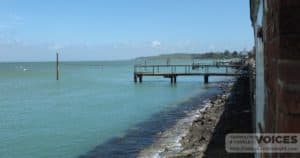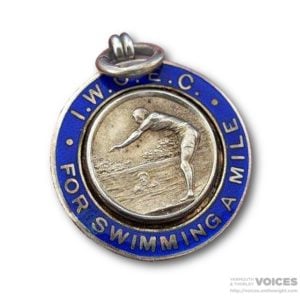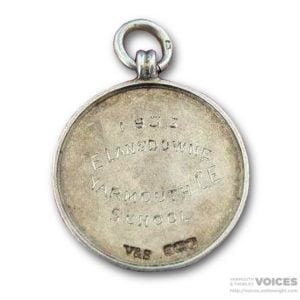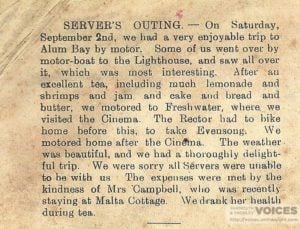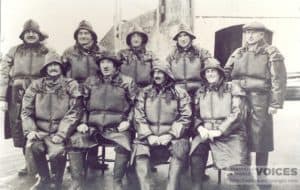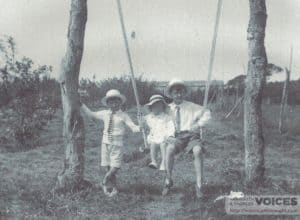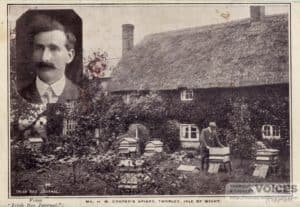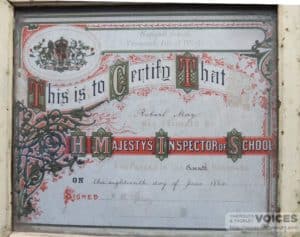
Robert May’s School Certificate1884
My grandfather, Robert May, went to Yarmouth School, my mother and her two sisters, I did, and my three children.
The last year I was at Yarmouth C. of E. School, there were 126 pupils and four teachers; Mr. Stanway the headmaster, Miss Troman, Miss Ireland and Miss Chambers, with the Headmaster’s wife, Mrs Stanway, helping out sometimes.
We started school at five years, no matter what time of year, and left at 14. Some people went on to Newport if they passed the scholarship.
Miss Ella Chambers had the first class. She was lovely; everyone was fond of her. If you met her in the town years later she’d say ‘Hello Eileen, – one of my girls.’
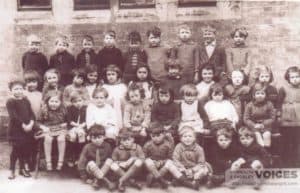
Yarmouth School, 1929 Eileen , 2nd row from back,5th from right
Every day we had half an hour’s scripture, and prayers. We had to learn the hymns off by heart. Reverend Marshall came from Thorley once a year to test the senior students. He was a bit deaf and he mumbled so you couldn’t always understand his questions. When he gave the prize, I think he guessed who knew the most.
The boys had gardening and woodwork, the girls knitting and sewing and embroidery. There were cookery lessons at Ningwood Institute for the senior girls – we travelled there by bus. Someone came out from Newport to teach us. We had old oil stoves, with a hob and an oven. Every week there was a draw to see what chores you had to do. I always seemed to end up cleaning the stoves – they were filthy old things.
Eileen Smith b1921

